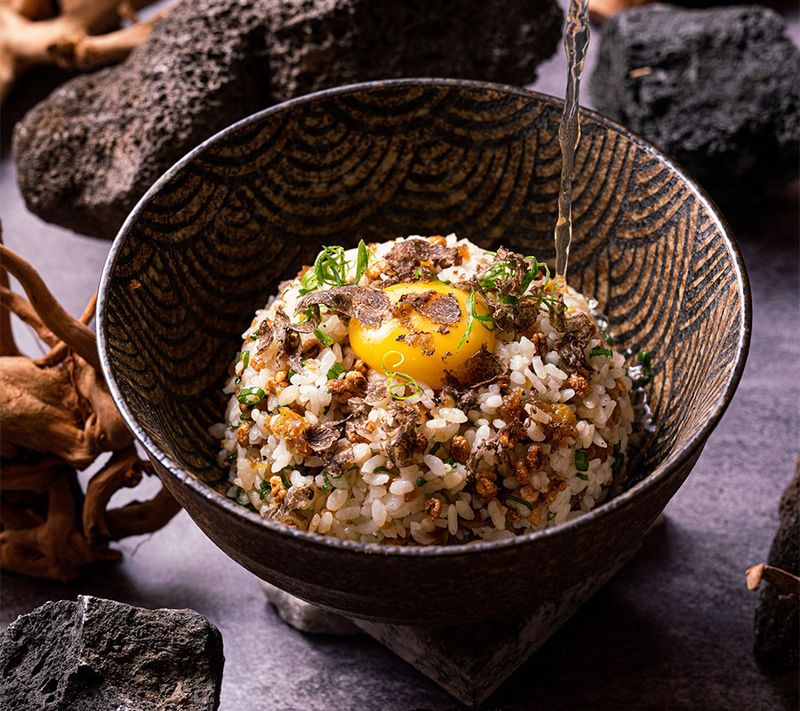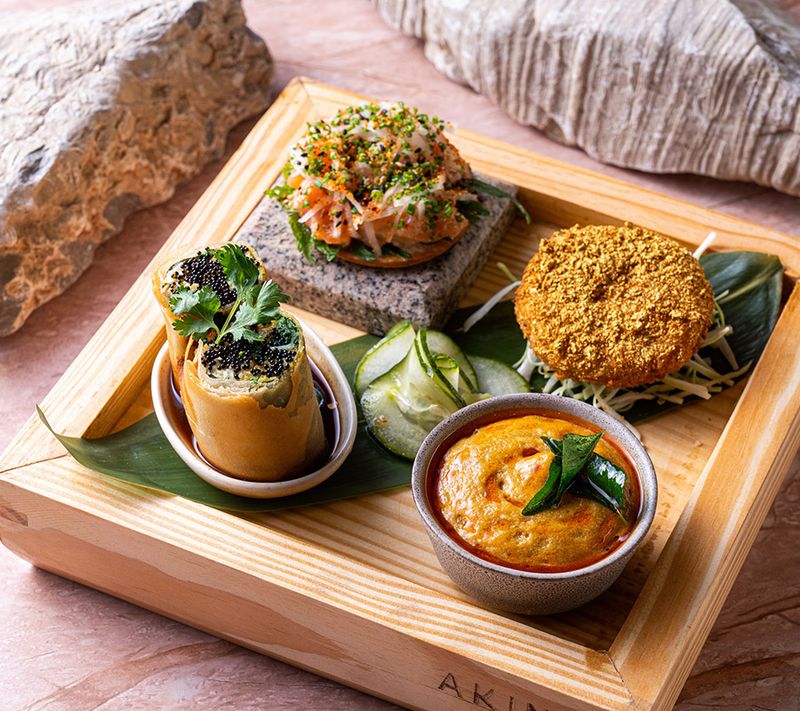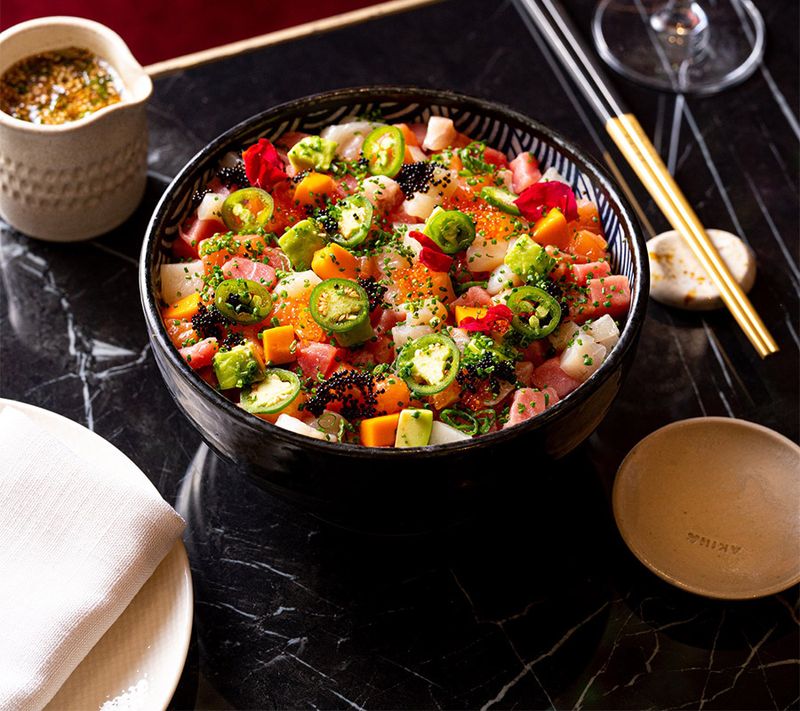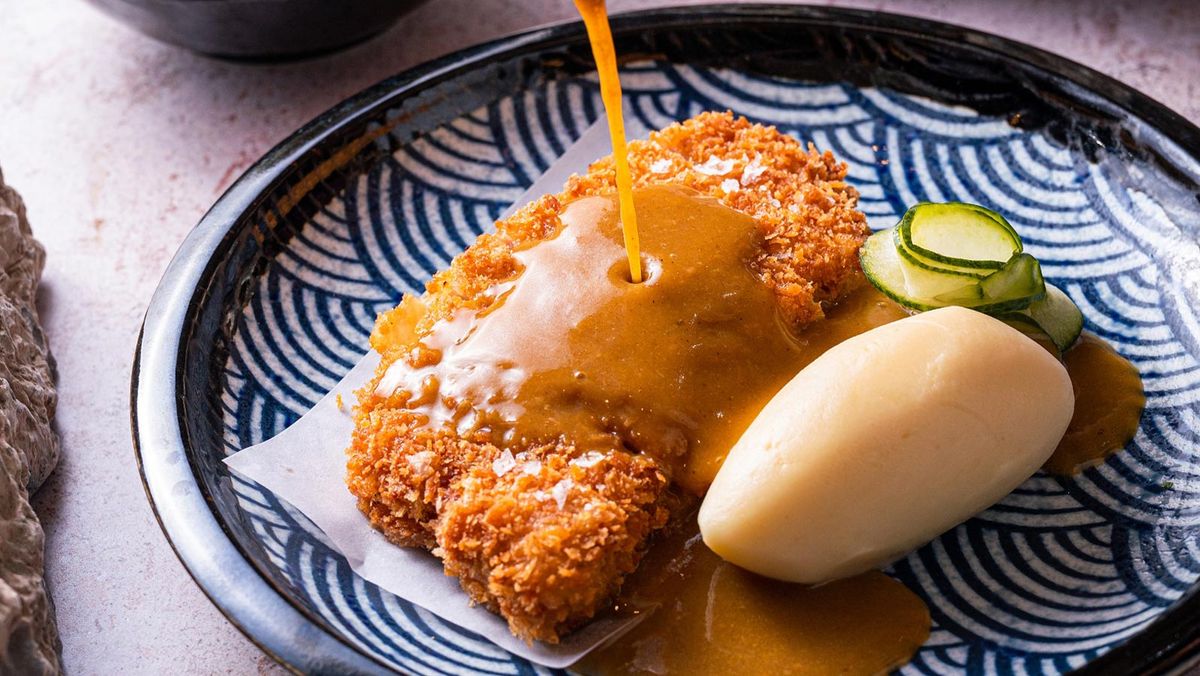As the season of spring prepares to make way for summer in Japan, in the months of March and April, Sakura blossoms take over the trees and the landscape is flushed with a pink hue. In India, April is when summer kicks in but that does not mean we can’t enjoy the same Sakura freshness here. Mumbai’s contemporary Japanese restaurant, Akina, has taken it upon itself to bring Japan’s fresh flavours to the city.
Japan’s summer ingredients in Mumbai
Akina’s culinary director, Chef Jesse Blake has created a menu that celebrates the ingredients used in traditional dishes served through the hot summer months in Japan. Some of the highlights from the summer special menu at Akina include chashu chicken made from sweet soy chicken, green mango and crisp noodles. The peppered chazuke rice with slow-cooked egg, crisp rice/chicken skin, truffle, smoked pepper and green tea dashi is sure to satisfy and was another of our favourites from the menu.

The cocktails, too, are highly recommended. Baja Dragon is inspired by the chef’s travels through the Mexican subcontinent. It creates a unique drink that features the sweet and exotic flavours of dragon fruit. Nutty Indulgence is Akina’s take on a Negroni. It is infused with honeyed, earthy, smooth figs, matured bourbon, vanilla sweet vermouth, Campari and walnut bitters.
We spoke to Chef Blake to better understand the summer menu. Here is what he had to say.
Edited excerpts:
1. What are some highlights of the summer menu at Akina?
The highlights of the summer menu at Akina include a range of local and seasonal summer produce, with small bites to start off the night as snacks.
2. How have you given Japanese summer dishes a contemporary interpretation?
We have given Japanese summer dishes a contemporary interpretation by adapting a version of the traditional Kakigori, served with Alphonso mango and shaved yuzu ice, adding a modern twist to a classic dish.
3. What interested you in Japanese cuisine?
I am interested in Japanese cuisine due to the abundance of high-quality ingredients that are used simply yet effectively in their dishes, allowing the natural flavours of the ingredients to shine.
4. And then why did you choose to go the contemporary way?
I chose to go the contemporary way to give a modern uplift and cater to the local palate, offering a unique dining experience that combines traditional Japanese flavours with a modern twist.

5. Can you throw light on the importance of umami flavours in Japanese cuisine?
Umami flavours play a crucial role in Japanese cuisine as they deepen the flavour of dishes and elevate the overall taste. For example, pairing something as complex as soy sauce with something as simple as a slice of raw fish can create a harmonious umami-rich flavour profile.
6. What is the one ingredient that you can't get enough of?
Currently, I have been enjoying fresh crab as it has a subtle and sweet flavour. I am also constantly learning and perfecting the process of breaking down a crab to utilise it in my dishes.

7. What are some of the culinary techniques from India you would like to implement in your style of cooking?
One culinary technique from India that I would like to implement in my style of cooking is Tandoori, which involves high-heat charcoal cooking and can be used across various dishes to add unique flavours and textures.
8. What are the three biggest food trends you see in 2023?
The three biggest food trends I see in 2023 are inflation, focusing on local ingredients, and increasing awareness of food sustainability. These trends are shaping the culinary landscape and influencing the way we approach food sourcing, menu creation and dining experiences.
The summer menu at Akina, Mumbai will be available, every evening from 7:30 PM onwards, until the end of summer season.


